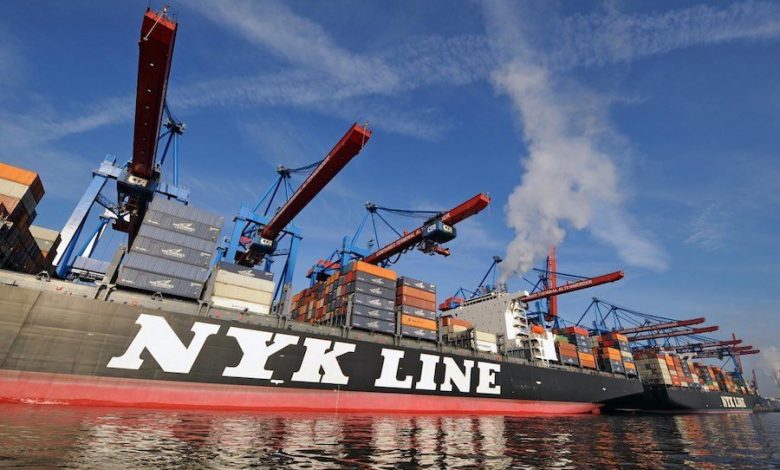NYK, MOL and K Line to merge container divisions

The three Japanese majors who will help form THE Alliance next April are to merge their container operations. Nippon Yusen Kaisha, Mitsui OSK Lines and Kawasaki Kisen Kaisha have decided to spin off their respective container divisions to form a brand a new company. The move fends off take over speculation from abroad, something that had been especially pertinent for K Line with Splash understanding more than one party had been eyeing K Line’s box assets.
The combined three will have a box fleet of 1.4m teu and 110 ships making it the fifth largest containerline in the world.
The deal includes worldwide terminal operating businesses excluding Japan.
In a release the three lines noted how due to adverse market conditions “the structure of the industry is changing through consolidation”.
NYK will have a 38% stake in the new venture with K Line and MOL holding 31% each.
If it gets regulatory approval the new venture should start business on April 1 next year.
“Most container shipping companies are making a loss. The three Japanese companies have made efforts to cut cost and restructure their business, but there are limits to what can be accomplished individually. Also, in order to keep a membership of a global alliance continuously, it would be necessary to have above a certain business scale level,” the three lines said in a statement today.
With CMA CGM taking over APL, and Hapag Lloyd and UASC merging, today’s announcement from Japan reduces the number of global carriers to just 13, down from 20 six years ago.
Commenting on today’s news, Andy Lane from CTI Consultancy told Splash: “I think that this is both further good news for the industry overall, as well as for THE Alliance and the three incumbents. As a single operational and commercial unit, they will be able to realise many millions of dollars of savings on vessel network costs, as well as streamlined back offices reducing SG&A costs. They will have the opportunity to adopt the best practice processes as well as supporting IT infrastructure and this will make them more robust for the future. Two fingers less on the pricing button will further reduce freight rate volatility, which is also good for the industry as a whole.”
